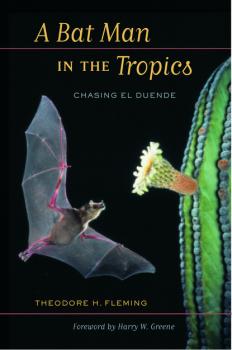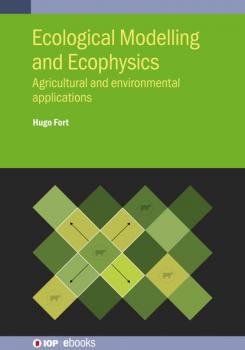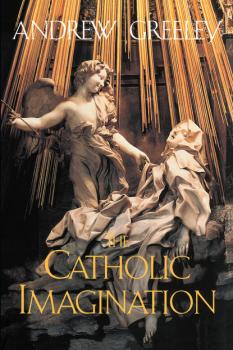Биология
Различные книги в жанре БиологияBarnum Brown
From his stunning discovery of <i>Tyrannosaurus rex </i>one hundred years ago to the dozens of other important new dinosaur species he found, Barnum Brown led a remarkable life (1873–1963), spending most of it searching for fossils—and sometimes oil—in every corner of the globe. One of the most famous scientists in the world during the middle of the twentieth century, Brown—who lived fast, dressed to the nines, gambled, drank, smoked, and was known as a ladies’ man—became as legendary as the dinosaurs he uncovered. <i>Barnum Brown </i>brushes off the loose sediment to reveal the man behind the legend. Drawing on Brown’s field correspondence and unpublished notes, and on the writings of his daughter and his two wives, it discloses for the first time details about his life and travels—from his youth on the western frontier to his spying for the U.S. government under cover of his expeditions. This absorbing biography also takes full measure of Brown’s extensive scientific accomplishments, making it the definitive account of the life and times of a singular man and a superlative fossil hunter.
A Bat Man in the Tropics
The euphoria of discovery is the only motivation many scientists need for studying nature and its secrets. Yet euphoria is rarely expressed in scientific publications. This book, a personal account of more than thirty years of fieldwork by one of the world’s leading bat biologists, wonderfully conveys the thrill of scientific discovery. Theodore Fleming’s work to document the lives and ecological importance of plant-visiting bats has taken him to the tropical forests of Panama, Costa Rica, and Australia, and to the lush Sonoran Desert of northwest Mexico and Arizona. This book tells the story of his fascinating career and recounts his many adventures in the field.<br /><br />Fleming weaves autobiographical reflections together with information on the natural history and ecology of bats and describes many other animals and plants he has encountered. His book details the stresses and rewards of life in scientific field camps, gives portraits of prominent biologists such as Dan Janzen and Peter Raven, and traces the development of modern tropical biology. A witness to the destruction and development of many of the forests he has visited throughout his career, Fleming makes a passionate plea for the conservation of these wild places.
Ecological Modelling and Ecophysics
This book focuses on use-inspired basic science by connecting theoretical methods and mathematical developments in ecology with practical real-world problems, either in production or conservation. The text aims to increase the reader’s confidence to rely on partial aspects and relations of systems to which we only have an incomplete understanding. By abstracting and simplifying problems, Ecological Modelling and Ecophysics seeks to expand the reader’s understanding and ability to solve practical issues with rigorous quantitative methods. The first part of this book is devoted to classical methods in population and community ecology. The second part aims to introduce the reader to certain tools and techniques from different branches of physics, such as thermodynamics, statistical mechanics and complex systems, and their applications in ecology and environmental sciences. Connecting ecological problems with well-studied phenomena in physics allows the exploiting of analogies to gain deeper insight into these problems, to identify novel questions and problems, and to get access to alternative quantitative methods and tools from physics. This is an essential text for quantitative ecologists and environmental scientists with an interest in novel mathematical approaches, and also applied physicists and mathematicians with an interest in ecological systems. Key Features Focuses on the practical applications of quantitative ecological models Practical challenges are drawn from agriculture and environmental science Applies methods and theories from physics to gain deeper insight into ecological challenges Covers key quantitative models in ecology including niche theory, mutualism, and game theory Will be of interest to environmental scientists and biophysicists as well as ecologists
The Catholic Imagination
Catholics live in an enchanted world: a world of statues and holy water, stained glass and votive candles, saints and religious medals, rosary beads and holy pictures. But these Catholic paraphernalia are merely hints of a deeper and more pervasive religious sensibility that inclines Catholics to see the Holy lurking in creation. The world of the Catholic is haunted by a sense that the objects, events, and persons of daily life are revelations of Grace. In this fascinating discussion of what is unique about the Catholic worldview and culture and what distinguishes it from Protestantism, Andrew Greeley–one of the most popular and prolific authors writing today–examines the religious imagination that shapes Catholics' lives. <br /><br />In a lively and engaging narrative, Greeley discusses the central themes of Catholic culture: Sacrament, Salvation, Community, Festival, Structure, Erotic Desire, and the Mother Love of God. Ranging widely from Bernini to Scorsese, Greeley distills these themes from the high arts of Catholic culture and asks: Do these values really influence people's lives? Using international survey data, he shows the counterintuitive ways in which Catholics are defined. He goes on to root these behaviors in the Catholic imagination. <br /><br />As he identifies and explores the fertile terrain of Catholic culture, Greeley illustrates the enduring power of particular stories, images, and orientations in shaping Catholics' lived experience. He challenges a host of assumptions about who Catholics are and makes a strong case for the vitality of the culture today. The Catholic imagination is sustained and passed on in relationships, the home, and the community, Greeley shows. Absorbing, compassionate, and deeply informed, this book provides an entirely new perspective on the nature and role of religion in daily life for Catholics and non-Catholics alike.
Stories in the Time of Cholera
Cholera, although it can kill an adult through dehydration in half a day, is easily treated. Yet in 1992-93, some five hundred people died from cholera in the Orinoco Delta of eastern Venezuela. In some communities, a third of the adults died in a single night, as anthropologist Charles Briggs and Clara Mantini-Briggs, a Venezuelan public health physician, reveal in their frontline report. Why, they ask in this moving and thought-provoking account, did so many die near the end of the twentieth century from a bacterial infection associated with the premodern past?<br /><br />It was evident that the number of deaths resulted not only from inadequacies in medical services but also from the failure of public health officials to inform residents that cholera was likely to arrive. Less evident were the ways that scientists, officials, and politicians connected representations of infectious diseases with images of social inequality. In Venezuela, cholera was racialized as officials used anthropological notions of «culture» in deflecting blame away from their institutions and onto the victims themselves. The disease, the space of the Orinoco Delta, and the «indigenous ethnic group» who suffered cholera all came to seem somehow synonymous.<br /><br />One of the major threats to people's health worldwide is this deadly cycle of passing the blame. Carefully documenting how stigma, stories, and statistics circulate across borders, this first-rate ethnography demonstrates that the process undermines all the efforts of physicians and public health officials and at the same time contributes catastrophically to epidemics not only of cholera but also of tuberculosis, malaria, AIDS, and other killers. The authors have harnessed their own outrage over what took place during the epidemic and its aftermath in order to make clear the political and human stakes involved in the circulation of narratives, resources, and germs.<br /><br />
Sexual Selections
Scientific discoveries about the animal kingdom fuel ideological battles on many fronts, especially battles about sex and gender. We now know that male marmosets help take care of their offspring. Is this heartening news for today's stay-at-home dads? Recent studies show that many female birds once thought to be monogamous actually have chicks that are fathered outside the primary breeding pair. Does this information spell doom for traditional marriages? And bonobo apes take part in female-female sexual encounters. Does this mean that human homosexuality is natural? This highly provocative book clearly shows that these are the wrong kinds of questions to ask about animal behavior. Marlene Zuk, a respected biologist and a feminist, gives an eye-opening tour of some of the latest developments in our knowledge of animal sexuality and evolutionary biology. <I>Sexual Selections </I>exposes the anthropomorphism and gender politics that have colored our understanding of the natural world and shows how feminism can help move us away from our ideological biases.<br /><br />As she tells many amazing stories about animal behavior–whether of birds and apes or of rats and cockroaches–Zuk takes us to the places where our ideas about nature, gender, and culture collide. Writing in an engaging, conversational style, she discusses such politically charged topics as motherhood, the genetic basis for adultery, the female orgasm, menstruation, and homosexuality. She shows how feminism can give us the tools to examine sensitive issues such as these and to enhance our understanding of the natural world if we avoid using research to champion a feminist agenda and avoid using animals as ideological weapons. <br /><br />Zuk passionately asks us to learn to see the animal world on its own terms, with its splendid array of diversity and variation. This knowledge will give us a better understanding of animals and can ultimately change our assumptions about what is natural, normal, and even possible.
Tantra
A complex body of religious practices that spread throughout the Hindu, Buddhist, and Jain traditions; a form of spirituality that seemingly combines sexuality, sensual pleasure, and the full range of physical experience with the religious life—Tantra has held a central yet conflicted role within the Western imagination ever since the first «discovery» of Indian religions by European scholars. Always radical, always extremely Other, Tantra has proven a key factor in the imagining of India. This book offers a critical account of how the phenomenon has come to be. <br /><br />Tracing the complex genealogy of Tantra as a category within the history of religions, Hugh B. Urban reveals how it has been formed through the interplay of popular and scholarly imaginations. Tantra emerges as a product of mirroring and misrepresentation at work between East and West–a dialectical category born out of the ongoing play between Western and Indian minds. Combining historical detail, textual analysis, popular cultural phenomena, and critical theory, this book shows Tantra as a shifting amalgam of fantasies, fears, and wish-fulfillment, at once native and Other, that strikes at the very heart of our constructions of the exotic Orient and the contemporary West.
Microbiology Terminology and Definitions (Speedy Study Guide)
If you are a student studying Microbiology, you may be greatly helped by a Microbiology Terminology and Definitions Study Guide as it can help you to focus and remember key terms that are going to be important to know when a big test arrives. These study guides also organize the information in a format that makes it easier for you to understand and conceptualize the concepts that you are learning about in school. Consider looking into purchasing such a study guide for your Microbiology course.
Lines in the Water
This beautifully written book weaves reflections on anthropological fieldwork together with evocative meditations on a spectacular landscape as it takes us to the remote indigenous villages on the shore of Lake Titicaca, high in the Peruvian Andes. Ben Orlove brings alive the fishermen, reed cutters, boat builders, and families of this isolated region, and describes the role that Lake Titicaca has played in their culture. He describes the landscapes and rhythms of life in the Andean highlands as he considers the intrusions of modern technology and economic demands in the region. <I>Lines in the Water </I>tells a local version of events that are taking place around the world, but with an unusual outcome: people here have found ways to maintain their cultural autonomy and to protect their fragile mountain environment.<br /><br />The Peruvian highlanders have confronted the pressures of modern culture with remarkable vitality. They use improved boats and gear and sell fish to new markets but have fiercely opposed efforts to strip them of their indigenous traditions. They have retained their customary practice of limiting the amount of fishing and have continued to pass cultural knowledge from one generation to the next–practices that have prevented the ecological crises that have followed commercialization of small-scale fisheries around the world. This book–at once a memoir and an ethnography–is a personal and compelling account of a research experience as well as an elegantly written treatise on themes of global importance. Above all, Orlove reminds us that human relations with the environment, though constantly changing, can be sustainable.
Flipperrific Big Book Of Big Fish (Whales, Dolphins etc)
When children look at fish in a nature book, they will see that there are beautiful colors and shapes of the various fish that live in oceans and lakes. They can use their imagination to create their own fish to put in a different habitat or one that eats other types of food than fish normally eat. Children can make aquariums at home with real fish that they get at a pet store so that they can see how they live in a habitat with water.









